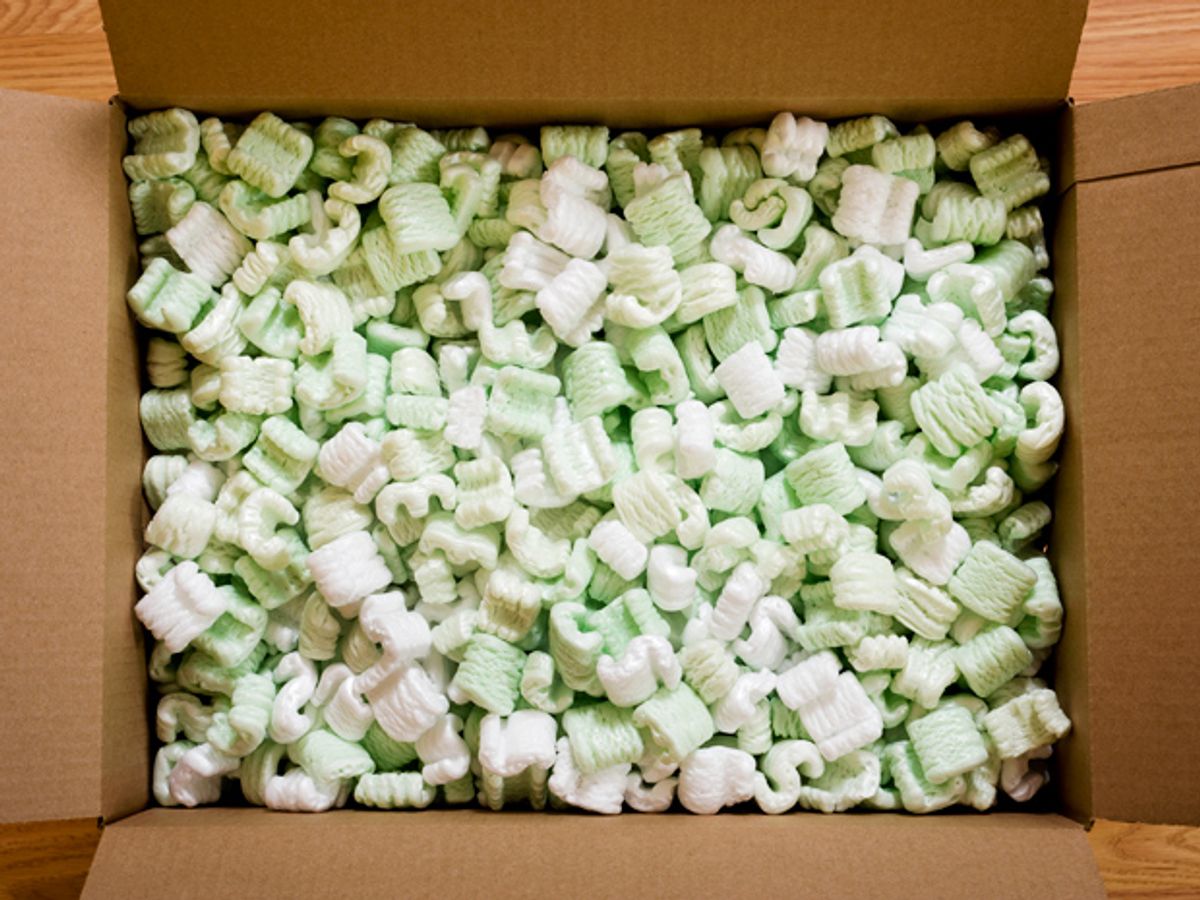Packing peanuts are excellent at protecting fragile objects but terrible for the environment. Recycling them is not cost-effective, so most end up in landfills, where they could sit around for a hundred years or more.
But the pesky little pieces of foam could be turned into anodes for lithium-ion batteries, Purdue University researchers say. The chemical engineers have found a simple, inexpensive way to convert packing peanuts into carbon nanoparticles and microsheets that perform better than the graphite anodes used in today’s batteries.
When a lithium-ion battery charges, the anode swells to store lithium ions. But graphite electrodes don’t swell very much. Graphite has a maximum lithium storage capacity of around 370 milliampere-hours per gram, but the anodes store less than that in practice.
In lab tests, the packing peanut anodes handily beat that limit, achieving a storage capacity of 420 mAh/g.
Chemical engineering professor Vilas Pol and his colleagues made the anode materials by baking packing peanuts at close to 600°C. Depending on whether the peanuts were made of starch or polystyrene plastic, they formed either carbon nanoparticles or microsheets. Both materials are porous and contain carbon atoms arranged in a disordered way. The disordered porous structure creates a larger surface area for holding lithium ions than the ordered sheets others have tried to make before, the researchers say.
Other groups are trying to make high-capacity anodes using graphene and nanostructured silicon. Some have also taken the recycling route by making electrodes from cotton fibers and tires.
It is not clear whether the packing peanut anodes can maintain their charge capacity over the thousands of cycles that will be needed for use in batteries. But in a press release, Pol said that the process his group has developed is scalable and that the recycled anode materials could be ready for commercialization in two years.
The researchers are presenting their findings at the American Chemical Society national meeting this week in Denver, Colo.
Prachi Patel is a freelance journalist based in Pittsburgh. She writes about energy, biotechnology, materials science, nanotechnology, and computing.



